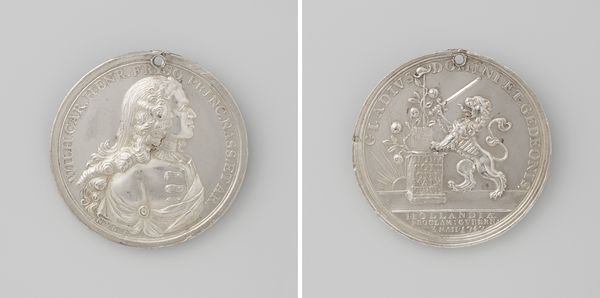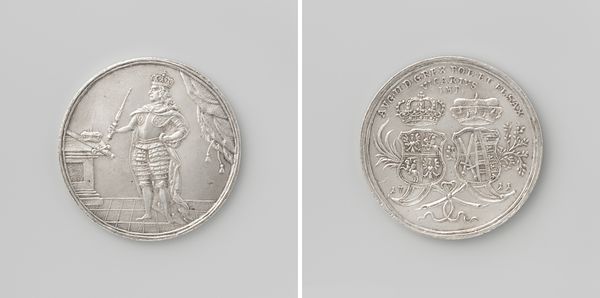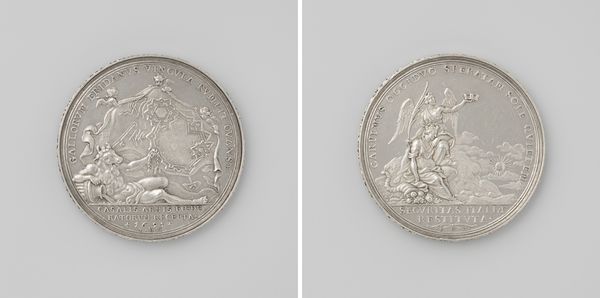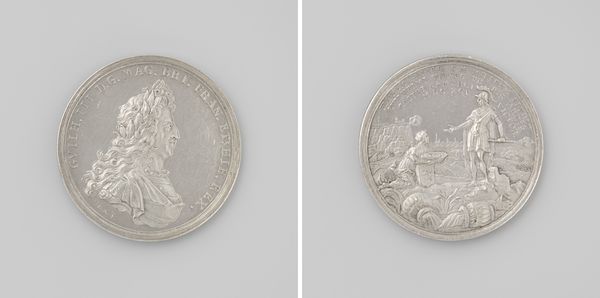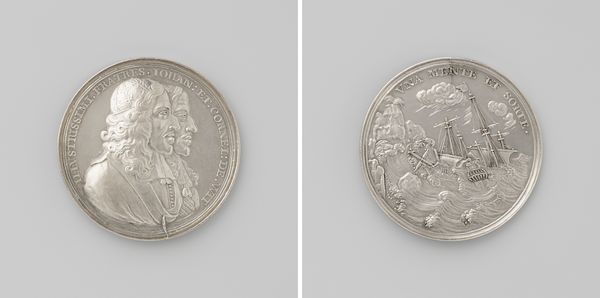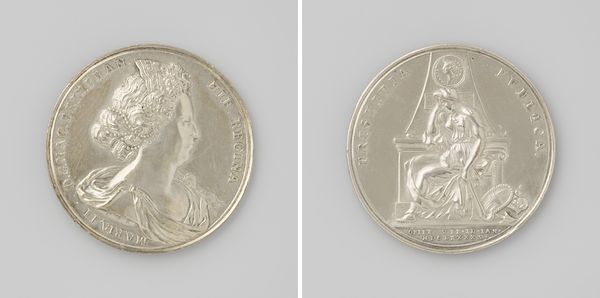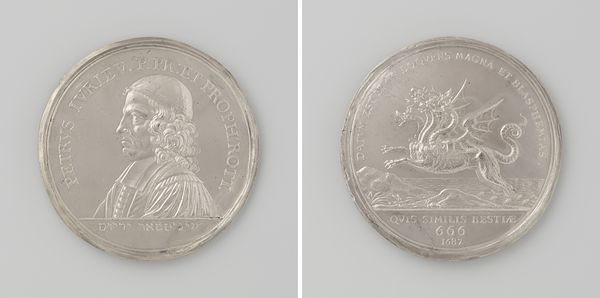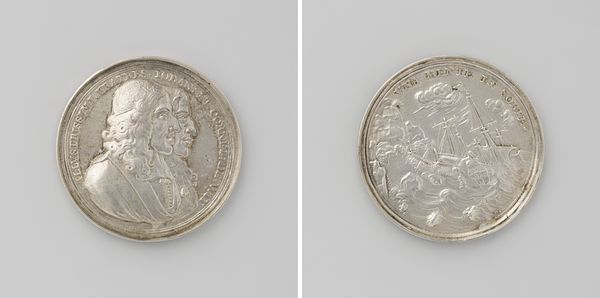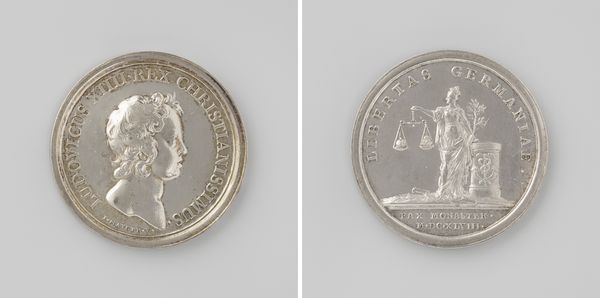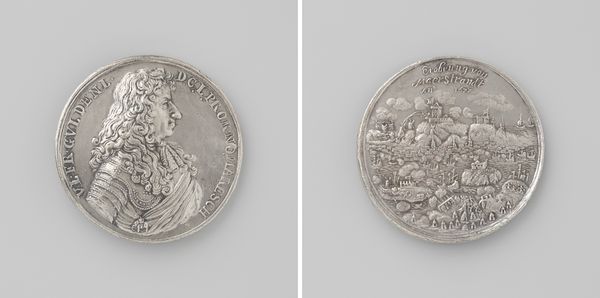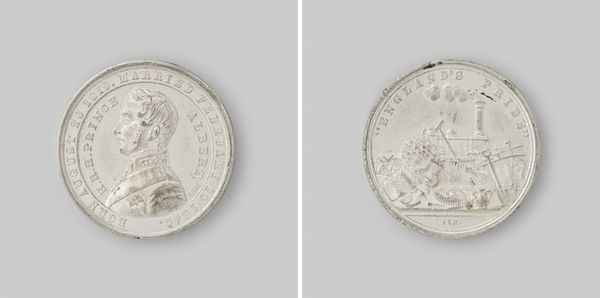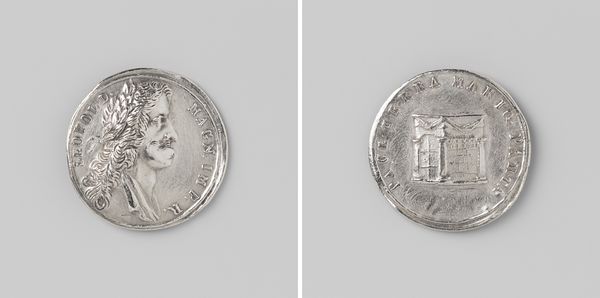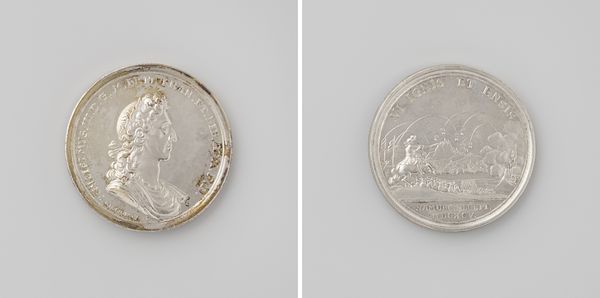
metal, relief, sculpture
#
portrait
#
baroque
#
metal
#
relief
#
sculpture
#
ceramic
#
history-painting
Dimensions: diameter 4.3 cm, weight 29.70 gr
Copyright: Rijks Museum: Open Domain
Editor: This fascinating metal relief, created in 1717, commemorates the victories of Eugene Francis of Savoy. The two sides are each intriguing, but I find myself wondering about the visual language here. How do you interpret this work from a formal perspective? Curator: This piece operates with a very clear visual duality. On one side, we see a high-relief portrait, meticulously detailed, that immediately draws the eye. The artist leverages a circular format to create a sense of completion and totality. Then, juxtaposed is the inverse with softer forms around symbolic palms of victory with an angel. Do you notice the variation in the depths of the relief? Editor: I do see the different depths! The portrait definitely stands out more. So, the deeper relief signifies… importance? Is it emphasizing Eugene's personal triumphs? Curator: Precisely. Consider the surface: The reflective nature of the metal sculpt emphasizes the contrast between light and shadow, further articulating the details. Notice also how the composition of the inscription, arcing along the circumference of the medallion, frames and contains the subject. The semiotic construction through use of the metallic medium inherently communicates value and durability in its materiality and the symmetry conveys harmony, order, and the balance that is at the heart of classical visual vocabulary. What does that tell you about what the artist thought? Editor: It seems like everything points to order and control and is maybe attempting to elevate Eugene’s image through this really careful arrangement and design. Curator: Indeed. And while seemingly straightforward, it displays sophisticated control of form. By analyzing these visual cues – the symmetry, the use of depth, the carefully placed inscription - we unravel the layered meaning embedded within this portrait. Editor: This close analysis has shown me the depth and complexity in what I first considered a simple historical piece. Thank you. Curator: My pleasure. I think this piece makes us better recognize and investigate those complex relationships and artistic decisions made by an artist.
Comments
No comments
Be the first to comment and join the conversation on the ultimate creative platform.
